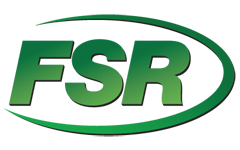
Over the past several years, an emerging digital revolution has completely disrupted and dramatically transformed the educational landscape. This transformation is grounded in a phenomenon often referred to as Educational Technology, or EdTech, which has steadily taken on the mantle of defining the direction of future classrooms. EdTech is no longer an optional extra, but an essential component of modern learning. Its influence radiates across every facet of teaching and learning, from the amplification of the traditional classroom setup to becoming a pivotal platform for distance learning. The diversity and relevance of EdTech are ever-evolving, becoming more critical with each passing day.
So, what does this technological metamorphosis mean for the future of education? Let's delve deeper into the progressively vital component that modern education has come to rely on.
1. Personalized Learning Experiences:
One of EdTech's most exciting offerings is its undeniable potential for personalization in learning. Adaptive learning systems, one of the shining stars of the EdTech repertoire, curate a unique educational experience that is tailored for each student on an individual level. It aligns with their pace, comprehends their context, and responds to their distinct learning style. In a very real sense, such systems create a personal learning pathway for each student.
Not only does this provide a comfortable learning pace for students, but it also empowers instructors with the ability to monitor individual progress. It allows them to pinpoint academic strengths and weaknesses, adjust instructions in real-time, and personalize interventions to maximize student performance.
2. Enhancing Teacher Efficiency:
Importantly, the story of EdTech is not about rendering teachers obsolete but about enhancing their capabilities and augmenting their influential roles within the educational ecosystem. Cutting-edge EdTech tools streamline and automate administrative tasks that can be burdensome and time-consuming. This frees up valuable time for teachers, allowing them to focus on their primary commitment: instructing and mentoring their students.
Furthermore, digital platforms create unlimited access to a treasure trove of educational resources, instructional materials, and reference libraries. These resources are invaluable for lesson planning, curriculum development, and the continuous refinement of teaching methodologies.
3. Collaborative Learning Environments:
EdTech extends its influence beyond individual learning by facilitating seamless collaboration within the learning community. Innovative platforms like Google Classroom enable group projects, digital discussions, peer reviews, and collaborative problem-solving exercises. These activities not only improve academic performance but also aid in fostering vital teamwork skills and enhancing social interaction among students. Breaking down the physical boundaries of classrooms, these platforms orchestrate a vibrant, interactive global learning network, casting a broad, international perspective on student learning experiences.
4. Integration of STEAM Learning:
Science, Technology, Engineering, Arts, and Math (STEAM) education finds a natural ally in EdTech. The integration of interactive activities, immersive online games, virtual labs, and digital art tools make the exploration of complex and abstract STEAM subjects not only manageable but-worth noting-exciting. Coding platforms, for instance, demystify programming concepts, while online simulation tools offer practical experiments beyond the physical constraints of traditional laboratory settings.
5. Lifelong Learning and Continuous Professional Development:
One of the most fundamental truths about education is that it no longer remains confined within the school years. EdTech bolsters the concept of lifelong learning and encourages continuous professional development by offering online courses, certification programs, and opportunities for self-paced learning. This means, for teachers, the opportunity for continuous professional development, upskilling, and staying updated with the latest educational trends and pedagogical techniques is just a few clicks away.
6. Bridging the Accessibility Gap:
EdTech has a profound social dimension to it. It is instrumental in democratizing access to quality education and creating an inclusive learning environment. The advent of assistive technologies has heralded a new era where learning difficulties for students with disabilities are being mitigated. Customized tools and resources aimed at supporting diverse learning needs are making education possible for all, thus bridging the accessibility gap.
7. Data-Driven Education:
The power of data analytics, driven by AI and machine learning, is an integral part of EdTech’s offering. It can sift through vast sets of data related to student performance, unearthing deep insights that can guide evidence-based teaching strategies, curriculum improvements, and policy decisions. These data-driven strategies go a long way in refining the educational process, leading to overall enhancement in educational outcomes and student success.
In conclusion, the transformation brought about by EdTech in modern classrooms signifies the increasingly digital future of education. As we journey deeper into this future, ongoing research, relentless advancements in technology, concerted educator training, and judicious resource allocation will be crucial factors in ensuring a seamless, effective, and inclusive implementation of EdTech.
Regardless of the obstacles and challenges that come our way, one conclusion stands out as an irrefutable truth: EdTech is here to stay, and it will continue to shape and redefine learning experiences in ways that were unimaginable even a few short decades ago. As we move towards an era marked by a fusion of education and technology, we stand on the brink of an education system that can be truly customized, inclusive, and universally accessible.
